How Silver Bullion Conducts Precious Metal Audits
A precious metals audit essentially answers this common question from customers, “How can I be sure that my gold and silver bullion are in the vault?”
A properly conducted audit confirms that uniquely identifiable physical precious metals are stored in a vault. For example, if you own a PAMP Suisse gold bar with serial number X12345, then this gold bar is verified to exist in the vault.
Why a Precious Metal Audit is Necessary
The short answer to why a precious metals audit is necessary is that it is the best way to allay any fears and quell any rumors that the gold or silver is not present.
There is nothing wrong with people doubting whether the gold and silver are there. Trust is not a given but earned over time.
Take the example of US official gold reserves, the largest national gold hoard in the world at 8,133.5 tons of gold, which has frequently been the subject of the public’s doubts about its status and existence. Such doubts have resulted in calls for audits of US gold throughout the decades.
For a better understanding of US gold reserves audits, the nation's official gold reserves are stored in a few locations:
- the United States Bullion Depository, commonly referred to as Fort Knox, in Kentucky
- the West Point Mint in New York state
- the US Mint’s Denver facility in Colorado
- the Federal Reserve Bank of New York in Manhattan, commonly referred to as the New York Fed
Fort Knox holds 4,580 tons of gold - the largest portion of total US gold reserves.

Aerial view of the United States Bullion Depository, a.k.a Fort Knox. (Source: The U.S. National Archives)
Doubts about US gold in the early 1950s
The first recorded audit of US gold reserves at Fort Knox happened in 1953 and came on the back of rumors that US gold reserves were depleting due to paying the bills of World War II and the Korean War. About 10% of Fort Knox gold was inspected in 1953. The rest of America’s official gold reserves remained in vault compartments placed under official joint seal.
Since then, there have been no public records of audits conducted on US gold reserves for two decades.
Doubts about US gold in the early 1970s
Doubts and consistent rumors that Fort Knox no longer held any gold surfaced again in the early 1970s. In a unique departure from its longstanding policy of absolutely no visitors, the doors of Fort Knox were opened to a congressional committee of nine accompanied by one hundred journalists in 1974.
However, this well-publicized event was not a gold audit, as only one vault compartment was opened to show the visitors the gold bars held in it.
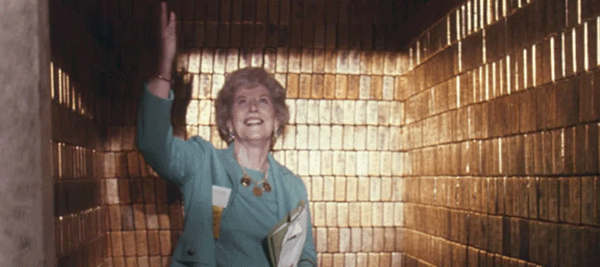
Director of the U.S. Mint, Mary Brooks, amongst the gold bars held in a Fort Knox vault compartment
during a 1974 tour for members of Congress and the news media.
Doubts about US gold led to the Gold Reserve Transparency Act of 2011
In 2011, Ron Paul, then chairman of the House Domestic Monetary Policy and Technology Subcommittee, held a hearing on the Gold Reserve Transparency Act of 2011. He said the following in his opening statement:
“For far too long, the U.S. government has been less than transparent in releasing information relating to its gold holdings. Not surprisingly, this secrecy has given rise to a number of theories about the gold at Fort Knox and other depositories. Some people speculate that the gold has been involved in gold swaps with foreign governments or bullion banks. Others believe that the gold has secretly been shipped out of Fort Knox and sold, and still others believe that the bars at Fort Knox are actually gold-plated tungsten.”
Unfortunately, the federal government never passed this Gold Transparency Act and several versions thereafter.
Importance of Transparency with Precious Metal Audits
As Ron Paul mentioned in his above statement, transparency is vital in an audit of gold and silver.
This 2011 hearing revealed that 97% of US gold reserves held by the United States Mint were verified incrementally between 1974 and 1986 by the Committee for Continuing Audit. When the Department of the Treasury’s Office of Inspector General (OIG) took over responsibility for the gold audits in 1993, the remaining 3% of US gold reserves were verified as all vault compartments had been audited by 2008.
It is important to understand that given the large number of gold bars in the US gold reserves, vault compartments were deemed audited if inspectors verified that the official joint seal remained unbroken in annual audits.
Research by gold analyst Jan Nieuwenhuijs into the history of US gold reserves audits has revealed a lack of transparency in how the audits were conducted. Vault compartments previously audited and sealed were opened for re-audits without proper explanations. When Jan requested all gold audit reports through the Freedom Of Information Act (FOIA), seven Fort Knox gold audit reports were not given and are likely missing.
Despite the information revealed from the hearing on the Gold Reserve Transparency Act of 2011, Jan’s research showed that questions about the audit process and contradictions between historical records and auditors’ testimonies are still unanswered.
Without full transparency, doubts will always linger over the status of the world’s largest national gold hoard.
How Silver Bullion Conducts Its Precious Metal Audits
Giving full transparency on how we store customers’ physical gold and silver has been Silver Bullion’s mission since the inception of our S.T.A.R. Storage program. We have conducted quarterly audits for precious metals stored at our vault, The Safe House, since 2014.
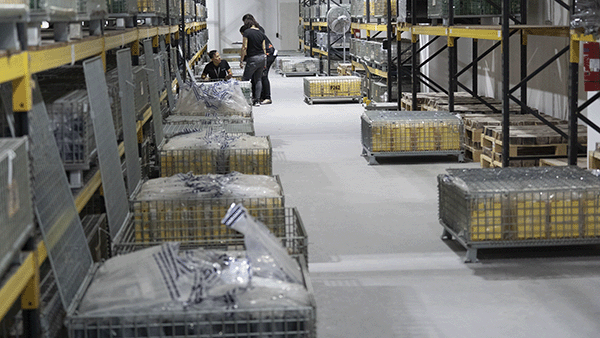
Cages containing silver bullion brought down for auditor’s inspection
Two external parties conduct our audits annually – Bureau Veritas conducts 3 audits, while Silver Bullion’s company auditor conducts the year-end audit.
Our company auditor had been PricewaterhouseCoopers (for 4 years) and Ernst & Young (for 4 years) in the past and is now HLB International.
Regardless of the auditor, a report is produced after each audit and is published on Silver Bullion’s website. All audit reports since 2014 are listed for public access, it is not hidden.
In each audit, the auditor decides and selects the precious metals parcels to inspect and is assisted by staff from The Safe House as custodians of the bullion.
With Bureau Veritas, about 20% of stored gold, silver, platinum, and palladium bullion are randomly selected for inspections in each audit regardless if they are owned by Silver Bullion or our customers.
Cages holding silver and storage boxes for gold are sealed with the auditor’s seal when all bullion has been verified. When the next quarter’s audit happens, the auditor selects another 20% of stored bullion that does not have the Bureau Veritas seal. This process allows all precious metals stored at The Safe House to be audited over time.
With our year-end audit with our company’s auditors, all precious metals owned by Silver Bullion, including our retail store’s inventory, are inspected with another 10% of customers’ bullion randomly selected to be audited. Verifying all uniquely identified precious metals owned by Silver Bullion also ensures that our customers’ bullion is never comingled with our company’s assets.
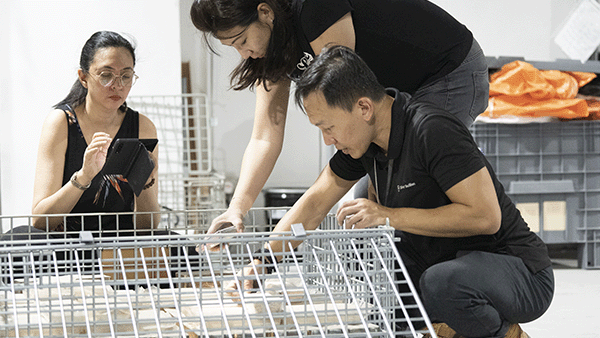
Silver Bullion & The Safe House staff reading out serial numbers on silver bars to the auditor
Employing Technology in our Precious Metals Audits
The growth of bullion stored at The Safe House every year also increases the bullion to be audited. In our bid to include as many bullion parcels to be inspected with each audit, The Safe House has introduced RFID tagging of bullion parcels and RFID scanners for quicker detection.
As seen in this 2018 video, our RFID scanners can accurately detect any missing parcels in seconds, saving time in manually counting every bullion parcel in the vault.
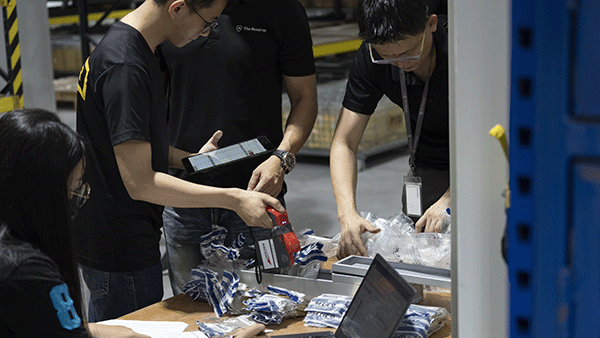
Using an RFID scanner to detect gold parcels stored in our gold vault
In addition, the auditors will also randomly select parcels to be manually verified by the parcels’ unique serial numbers. This requires our staff to locate and call out parcel numbers to match against the auditor’s list. The auditor will also visually inspect the bullion type and selects parcels to be weighed.
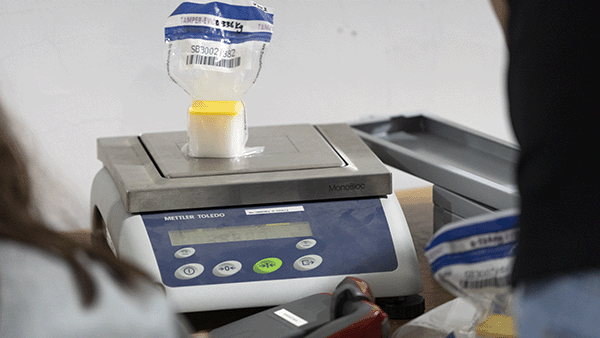
Gold coins weighed as part of the audit for gold stored in our vault
Our combination of using RFID and manual verification allows for the swift detection of any missing parcels to ensure that all customers’ bullion is accounted for.
Other Ways to Audit Your Stored Precious Metals
Besides inspections by third-party auditors, our customers have other ways to audit their precious metals stored at The Safe House.
Verify Gold & Silver with the Parcel Ownership List
The primary document third-party auditors use is the Parcel Ownership List which lists all the bullion parcels stored in our vault. This list does not contain customer names. Instead, it shows S.T.A.R. account numbers against the details of the owned parcels.
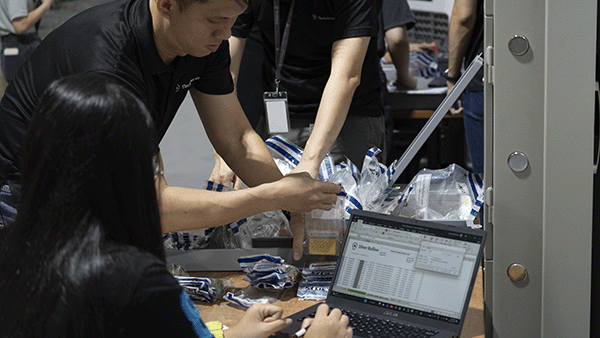
Auditors inspecting stored gold bars using the Parcel Ownership List
The Parcel Ownership List tracks any movement of parcels and is updated weekly. All S.T.A.R. Storage customers can download the Parcel Ownership List as a PDF document from within their accounts.
Entering parcel numbers into the document’s search function lets customers quickly verify that their parcels are listed and exist only once.
Request for an Online Precious Metal Audit
With The Reserve building that The Safe House is located in still under renovation, customers can request an online audit of their precious metals holdings via a video call. Similar to an in-person audit, the customer will have a ‘walkthrough’ of the silver and gold vault facilitated by The Safe House staff and witness the retrieval of their bullion parcels via a mobile device connected with a video call.
With an online audit, customers can interact with our staff and ask questions, just like being in person at the silver and gold vault.
In-person Audits
Before the renovations at The Reserve, we have always encouraged our customers to visit The Safe House and do an in-person audit. However, in-person visits have been minimized with heavy construction work in and around the building. We expect in-person visits to resume by Q3 2023 with the completion of The Reserve.
Watch Our Latest Year-End Precious Metals Audit Video
Silver Bullion is a forerunner with transparency in how we store precious metals. We have produced a video to share the inside look at our recent 2022 year-end audit with our customers. Unfortunately, few bullion storage providers offer this level of transparency.
The Parcel Ownership List tracks any movement of parcels and is updated weekly. All S.T.A.R. Storage customers can download the Parcel Ownership List as a PDF document from within their accounts.
Protect Your Wealth With the Strongest Bullion Storage Provider
It is our view that one of the biggest problems plaguing the precious metals storage industry is the lack of transparency. Oftentimes, bullion owners are unsure of how their precious metals are stored and audited because bullion storage providers often shroud such information with excuses of security concerns.
On the other hand, Silver Bullion believes that transparency is the best self-checking mechanism for the storage provider, giving customers the ultimate peace of mind and keeping the precious metals storage provider accountable. When you store wealth with us, you will always have access to your precious metals, bullion audit reports, and timely responses by our staff to your questions.
If you like our approach to bullion storage transparency, do contact us for further questions and consider transferring precious metals to be stored with us. Silver Bullion is a strong counterparty committed to protecting our clients’ generational wealth.
